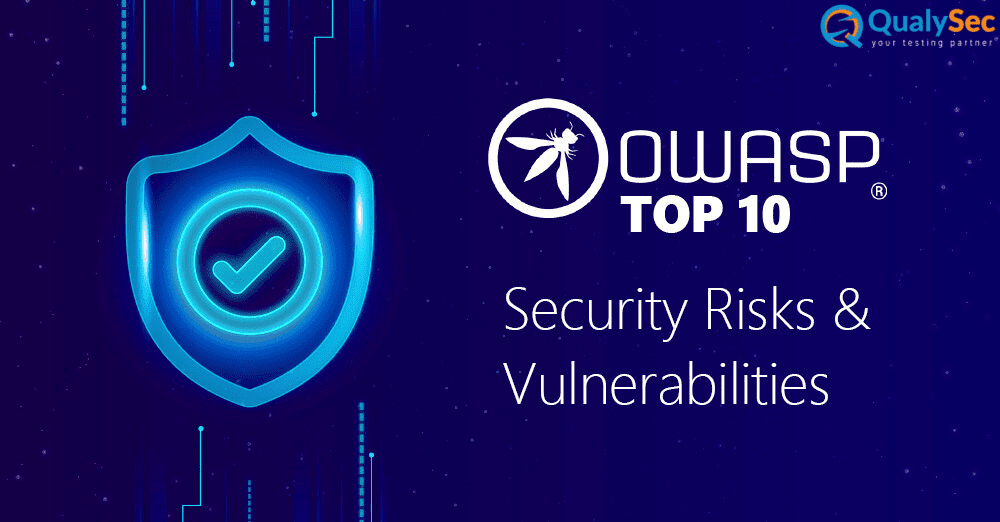Web applications having third party services are favorite target for cyberattacks. Web application source codes hosts over 80% of overall threats in an application. You might miss this, but the hackers don’t. They grab this opportunity for their personal benefit. And for a business this is extremely harmful. So, to provide ambient security to a web application; securing OWASP top 10 web application threats 2021 is a must.
What is OWASP Top 10?
The QWASP(Open Web Application Security Project) top 10 is an online community that produces freely-available articles, methodologies, documentation, tools, and technologies in the field of web application security. Simultaneously, the Open Web Application Security Project provides free and open resources.
Every year OWASP renews this list considering various studies, statistics and reports from all over the world. Therefore every software engineer should understand and make a code failproof. This not only saves time, but also avoids huge expenses on system failure.
Here we enlist OWASP Top 10 Web Application Threats 2021: –
1. Broken Access Control-
A web application’s security programming should involve factors like allowing only a specific set of functions to some specific individuals. And hide information and functions from visiting users to the web application. So, by doing this it ensures the safety of the web application and controls the authority over the web application is not publicized.
For example, consider a blog posting web application. Now, visitors should only have access to interacting, reading, sharing, and commenting over the blogpost. So, functions like posting a new blog, making changes or even elimination existing blogs should be authorized to the site owner only.
Therefore, weakly designed security system provides open-ended pathways for hackers to hijack and commit identity thefts, gain access to entire web application.
Causes:
- Absence of restrictions and controls
- Basic set of security policies implementation failure
2. Cryptographic Failures
Dormant data is encrypted within the web application for security purposes. This dormant data could be login passwords, payment passwords, pins, credit cards and etc. Therefore, within the web application sensitive information is saved. Furthermore, as this data is encrypted, every encryption has a key to decrypt it.
Each and every encryption method is unique but not impossible to crack. So, hackers use these cryptographic key to decrypt the saved dormant data within the web application.
Therefore, one sould always double check for cryptographic failures within their web application.
Causes:
- Unencrypted data
- Absence of top-notch security parameters
- Gathering and storing unnecessary sensitive data
3. Injection
Injection vulnerabilities occur when a command is used to inject unauthorized data into the interpreter by means of SQL, OS, NoSQL or LDAP. Eventually, this causes the web application’s interpreter to host commands it was never intended to follow. For example, accessing sensitive data without appropriate authorization.
Causes:
- Unmonitored command inputs
- Unsafe frameworks
4. Insecure Design
Insecure design encompasses a wide range of flaws and absence of proper control design. So, OWASP added factors like threat modelling, design patterns and web application architecture in 2021.
Causes:
- Duplicating architecture from a existing application
- Insecure security parameters
5. Security Misconfiguration
This refers to simple human errors made during setting the security parameters of the web application. So, this vulnerability is caused by human negligence to understand how important the implementation of security settings for the web application is. For example, verbose error notification with sensitive data.
Causes:
- Human error/negligence
- Using default security settings
6. Vulnerable And Outdated Components
This refers to the use of outdated codebases to run the web application. Older technology is easier to hack. So, hackers easily identify codes with security issues.
Causes:
- Neglecting presence of vulnerabilities
- Irregular or absence of QA and penetration testing
7. Identification And Authentication Failures
Applications executing incorrect functions related to session management and user authentication are easily hacked by intruders. Eventually, compromising passwords, security keys, sensitive data and hijacking identities of other users.
Causes:
- Frail login password schemes
- Weak authentication mechanisms
- Feeble session management policies
8. Software And Data Integrity Failure
Software and data integrity failures are codes and data structures failing to provide protection against integrity violations. And web applications using plugins and CDN’s (content delivery networks are examples of this. Furthermore, deployment of automated update function is now fairly popular in web applications. Therefore, hackers manipulate this and deploy their updates to the web application across systems and networks causing mass hijack of the interconnected networks.
Causes:
- Unsecure codebase
- Unoptimised data structure
- Failure to comply with trusted CDN’s and plugins
9. Security Logging And Monitoring Failure
Regular logging and monitoring of web application is highly neccessary for effective application security. As well as, inefficient procedures and ineffective incident response raises security risks. So, this provides the cyberattacks a freeway to arrange and implement a hijack of entire application and steal, manipulate or tamper sensitive data.
Causes:
- Irregular or absence of logging and monitoring processes
- Iefficient procedures
10. Server-side Request Forgery (SSRF)
SSRF is a security flaw that enables the hacker to a server-side application to forward HTTP based remote access request to any unexpected domain of hacker’s choice. So, this security threat is very dangerous as remote access allows the hacker to allow any domain the authorization over the web application.
Cause:
- Missing basic level of security testing
- Faulty insecure codebase

Conclusion
Therefore, we have explained the OWASP top 10 web application threats 2021. So, now you understand he necessity to identify and solve all the threats mentioned above.
Finally, with QualySec, you can be assured of perfect QA and penetration testing to detect any and all security threats present in your product. Moreover, QualySec guarantees proven remedies to each and every security threat for your web application.
Contact us and allow us to provide your company successful security solutions for your web application.






























































































































































































































































































































































































































































































































0 Comments